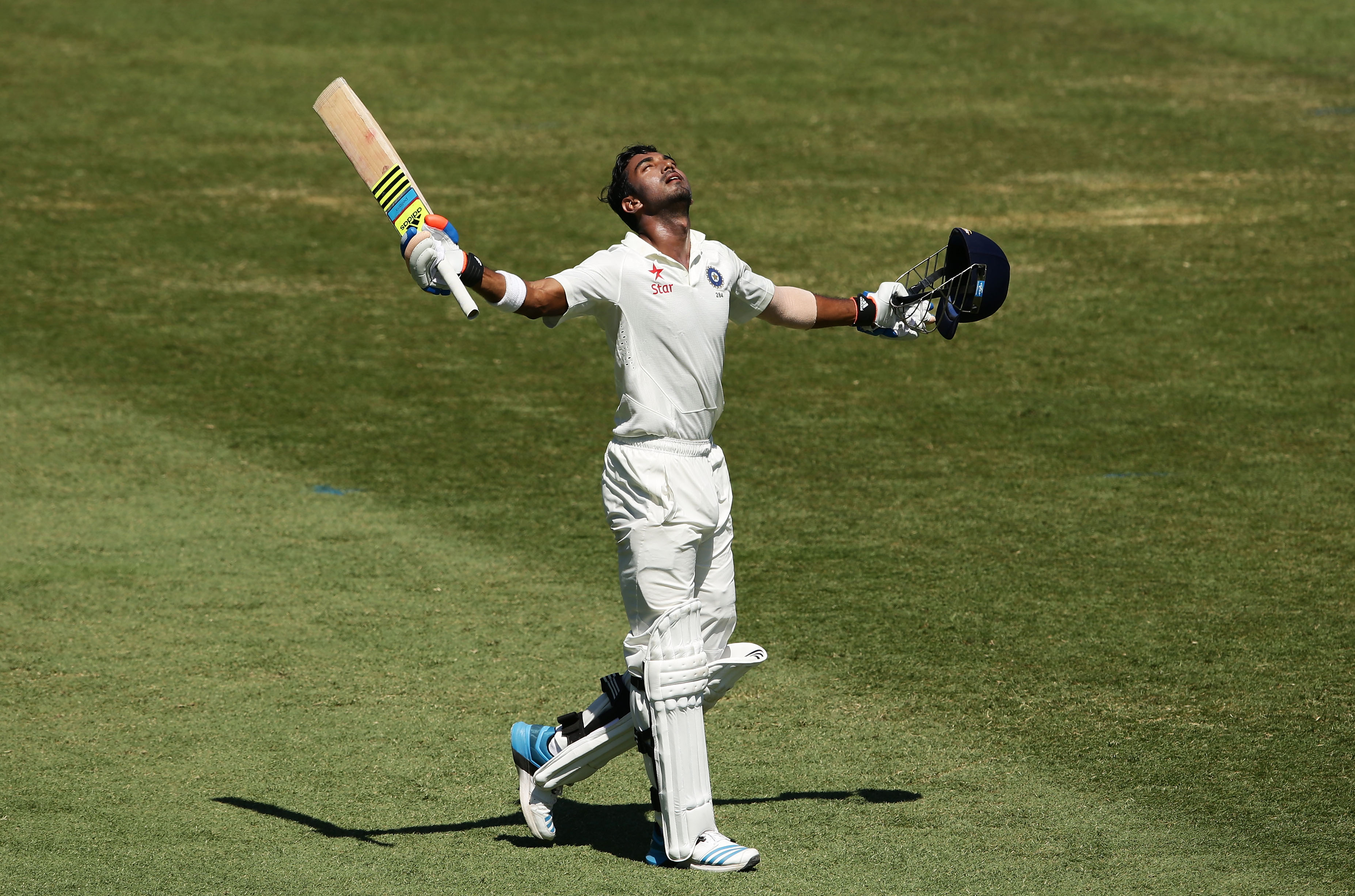KL Rahul – The new Wall in the making

T20 has
In India, someone like Cheteshwar Pujara, a classical Test batsman, has failed to make it in the limited overs format, while Rohit Sharma is struggling to grab a permanent place in the Indian Test side. Even Virat Kohli, who has been in God-like form recently, is yet to establish himself as a Test great.
No other players are forced to change their basic game to suit the demands of the shortest format as much as Test openers and spinners.
Aakash Chopra
Earlier this month, former Indian cricketer Aakash Chopra mentioned in one of his articles for ESPNcricinfo that the “T20 format would seriously affect the growth of Test openers and spinners in particular”, because “no other players are forced to change their basic game to suit the demands of the shortest format as much as Test openers and spinners”.
However, on Saturday, KL Rahul threatened to dispute this
Rahul is a patient man—a virtue which is a liability in T20s, especially to a generation of fans who have the attention span of Cocker Spaniel.
In April 2015, Sunrisers Hyderabad had restricted Mumbai Indians to
However, Rahul was bestowed with a virtue which will always stay relevant—determination. He was determined to succeed, and he has come a long way since that night at Wankhede in the last 16 months.
‘Take good care of him,’ was what Rahul Dravid told Samuel Jayaraj, who had coached KL Rahul since his school days, after watching his namesake score a double century in an Under-13 match for Mangalore at the Chinnaswamy Stadium. The former Indian cricketer was quick to spot his talent, and since then he has mentored KL Rahul.
Ironically, Rahul had been conferred with the same label which had followed his idol throughout his career—a Test specialist. However, the meaning of that tag has changed a lot since the advent of T20s. Earlier, it was a compliment reserved for the most technically superior breed of cricketers, nowadays, it carries a dreadful intonation. You are cast off like a leper into the backwaters, while the flamboyant ones are revered. As a result, you will not be able to savour the huge rewards on offer in the shortest format.
Despite scoring
Samuel knew that the boy, whom he had trained from the age of 10, at the other end of the line was desperate. Desperate to succeed in all the formats. Samuel's answer was simple, “Stop worrying”. And he did.

 © Getty Images
© Getty ImagesRahul was diagnosed with dengue fever in August last year, and missed India's tour to
Royal Challengers Bangalore picked him up in 2016, and Chris Gayle's paternity leave gave him the opportunity to establish himself
Rahul made peace with the fact that he will not be hitting big sixes like
“If Rahul was dismissed cheaply we would be all out for less than 100. The team banked on him to score runs to such an extent that he had to take twos or hit boundaries and take a single off the last delivery of an over to retain strike,” his coach Samuel had said earlier in an interview to the Indian Express.
However, at RCB, he was able to loosen up and play his strokes freely, and Kohli allowed him that freedom. While the RCB skipper and de Villiers grabbed most of the limelight, Rahul calmly went about his business and finished the season as RCB's third highest scorer, and in some matches, he even overshadowed his much high-profile teammates. However, he did not compromise on his cricketing shots. He got
IPL's success earned him his ODI debut for the national team in Zimbabwe, and he became the first Indian batsman to score a century on his ODI debut. But the more intriguing aspect of that innings at Harare was his ability to switch off from the IPL mode and be circumspect on a pitch which was assisting the bowlers. After defending for most of the opening phase of the innings, he moved up through the gears towards the end and saw India through to a comfortable win. Most people remember the six he hit to bring up his century, but the more striking feature was his ability to adapt to a different format with such ease, in such a short span of time.
The other trait which has impressed many is his ability to refrain himself from playing certain shots in the longer format. While KL Rahul loves to pull and hook in the shorter format, one would hardly see him use that shot in Test matches, at least not until he is set. Very few players have such discipline and determination.
He has already scored Test centuries in Australia, Sri Lanka, and West Indies. He has also

Comments
Sign up or log in to your account to leave comments and reactions
0 Comments